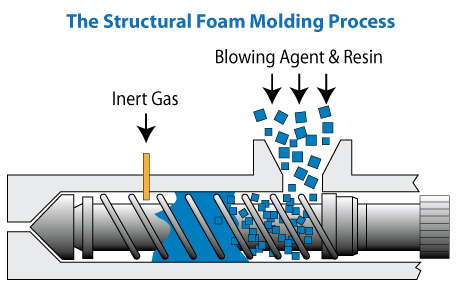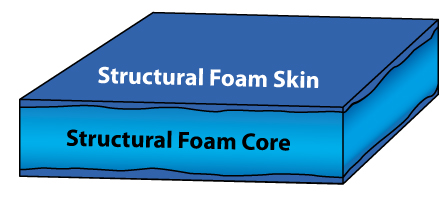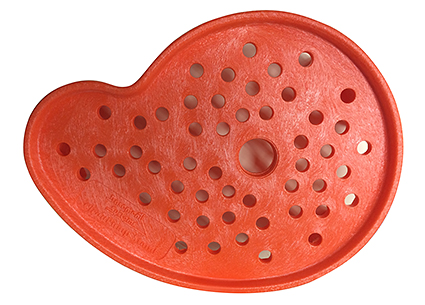Structural Foam Injection Molding
Structural Foam Molding Process
Structural Foam Molding is a process where the addition of a blowing agent and modification of process parameters creates a sandwich construction that has a solid skin on the outer layers and a foam core in center.
In the structural foam molding process a blowing agent creates a cellular structure while a rigid skin forms. The wall thickness ranges from 0.080" to 0.500" with typical thickness between 0.230" and 0.250".


Design Benefits Compared to Solid Injection:
- • Reduced part weight (up to 15%)
- • Larger parts… lower pressure
- • Thick sections (up to 0.500”)
- • Sink mark reduction
- • Lower cost tooling

Performance Benefits Compared to Solid Injection:
• Increased stiffness to weight ratio
• Reduced part stress
• Better heat insulation
• Improved acoustical characteristics
• Improved electrical insulation characteristics
Materials Used in Structural Foam
Most any thermoplastic material can be used in a structural foam application including:
• Polycarbonate
• Polyphenylene Oxide - PPO (Noryl)
• Polybutylene terephthalate - PBT (Valox)
• Acrylonitrile Butadiene Styrene – ABS

Design Features & Considerations
• Lower internal stress than injection molding
• Thick ribs and bosses are possible
• Brass inserts can be used for threaded bosses
• Solid look and feel with a reduced weight and cost
• Product is almost always painted
• Slower cycle time than standard injection molding

Gas Counter Pressure
Gas counter pressure is a process within structural foam molding whereby the mold is pressurized prior to injection offering these benefits:
• Allows the product to have the benefits of structural foam without paint
• In mold texture possible
• High gloss possible
• Makes very flat, dimensionally stable parts

